by Cornelia Reiher
On a beautiful weekend in the spring of 2023, a friend invited me to a market in the countryside of Oita Prefecture. The market was held on the private property of a couple of urban-rural migrants. Their adult son had moved to the same area with his family a few years ago, and the parents followed him because they wanted to be close to him and their grandchildren. In their idyllic garden, which surrounds their house on a hill overlooking the rice fields, several people had set up stalls. They sold pastries, bread, tea, toys and clothes. To get to the house, we had to climb up the hill under flowering trees. When we arrived, a guitar concert was taking place on an impromptu stage, which, together with the scent of spring flowers and blossoming trees, created a very special atmosphere. Many of the visitors and vendors were urban-rural migrants and most of them had brought their children with them.
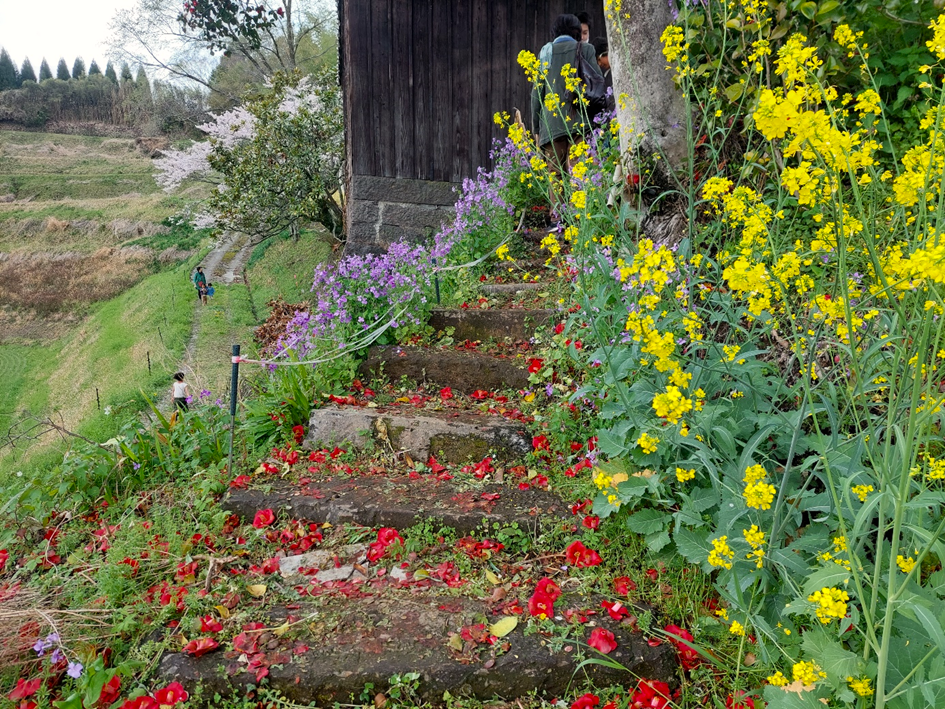
Copyright © Cornelia Reiher 2023
Before we were allowed to enter, we were asked to exchange Japanese yen for a local currency (chiiki tsūka) called deera, which inspired the name of the event. Everything offered for sale could only be paid for with deera. The man in charge of the currency exchange turned out to be a member of the grassroots organization Transition Japan and lives in Minami Aso, a town close to Taketa. He handed me a brochure with the slogan “Taisetsu na koto wa, ashimoto ni aru.” (The important things are right here.) He explained that the aim of the Transition Town movement is to create a more sustainable future in order to “pass on a rich and beautiful planet to the next generation.” I had only ever read about alternative currency groups and the Transition Town movement in Japan (Morris-Suzuki 2017) and was delighted to see it in action and speak to one of its members.
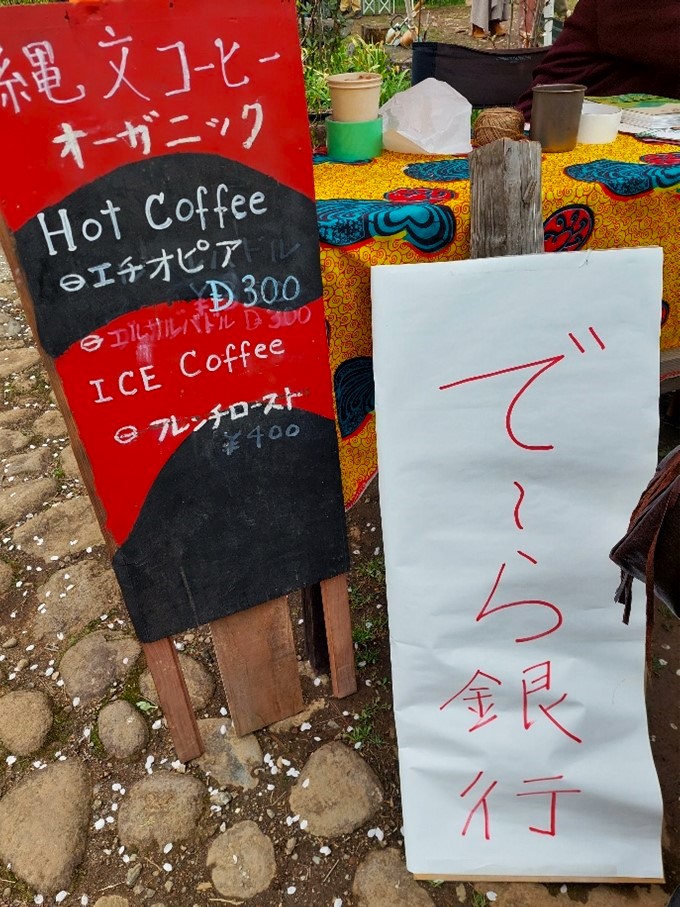
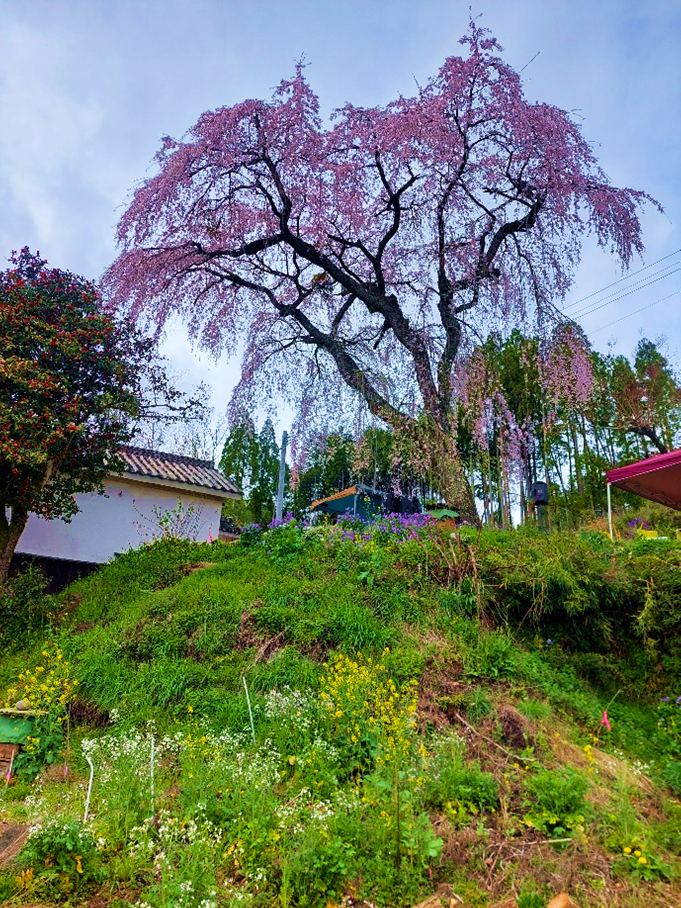
Transition Japan supports and promotes the Transition Town movement in Japan. The movement envisions a transformed society that turns away from mass production, mass consumption and mass disposal of material goods and towards a new awareness of “the social benefits and environmental impacts of the things we produce” (Morris-Suzuki 2017: 186).The non-profit organization Transition Japan was founded in June 2008 with the aim of introducing the UK-based Transition Town movement to Japan. In June 2009, Transition Towns were launched in Japan in Fujino, Hayama and Koganei. In July 2010, the number of Transition Towns in Japan reached 15 (Transition Japan 2021). After the 3/11 triple disaster, the movement grew strongly, and by early 2017 there were 46 Transition Towns in Japan, and many existing Transition Towns have launched new renewable energy projects (Morris-Suzuki 2017: 185). In 2020, the network consisted of 60 transition groups (Transition Japan 2021).
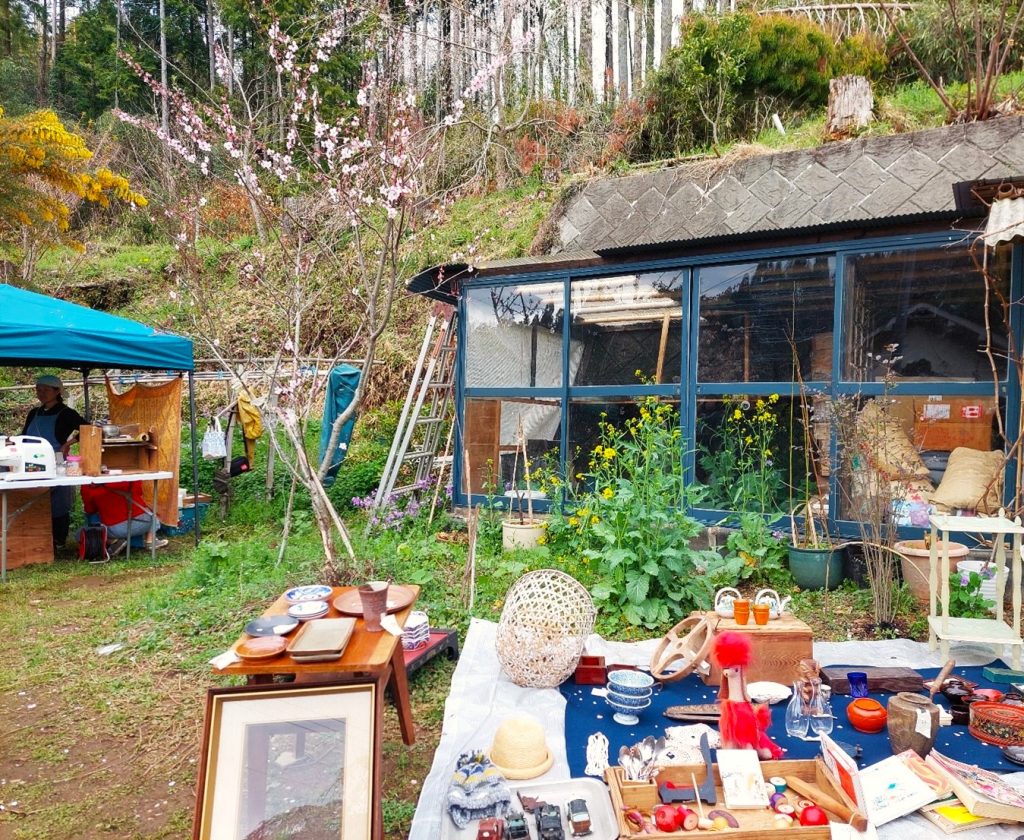
Copyright © Cornelia Reiher 2023
As there is a Transition Town group in Minami Aso, it was not surprising to see many people and vendors from Minami Aso at the deera matsuri. On their website, the group introduces themselves as “a transition initiative in Kumamoto, Kyushu, at the foot of Mount Aso. The local community is moving towards a sustainable way of life by helping, taking care of each other and living in harmony with Mother Nature.” (Transition Town Minami Aso 2019). Many of the members are involved in permaculture, such as the young couple from Tokyo who moved to Minami Aso a few years ago and who sold tea made from leaves picked under the full moon at their stall at the deera matsuri. The deera matsuri takes place several times a year and is a place where people interested in sustainability and the environment meet to have fun, but also to support the activities of Transition Japan.
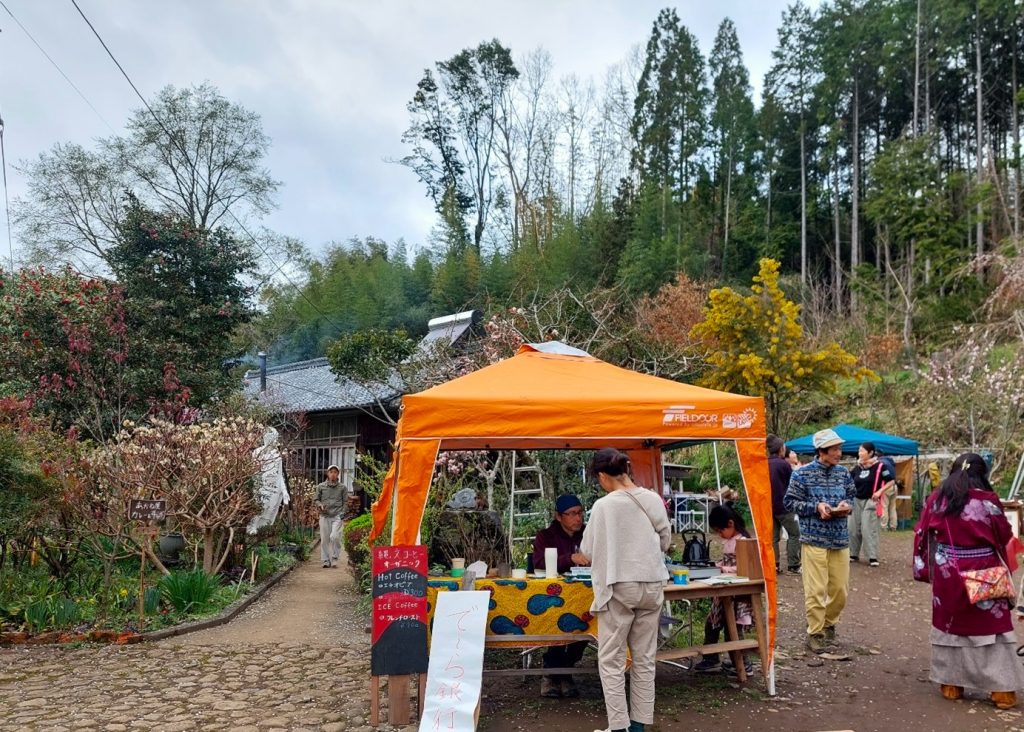
Copyright © Cornelia Reiher 2023
Local alternative currencies and local exchange trading systems have been discussed by some scholars as everyday utopias (Cooper 2016, Morris-Suzuki 2017). Everyday utopias are networks and spaces in which regular everyday life is conducted radically differently from mainstream or hegemonic everyday practices. Their aim is not to change society through campaigns or lobbying, but to create change by experiencing social and political life in new ways. In this way, everyday utopias contribute to transformative politics and change by combining the utopian and the everyday (Cooper 2016). Many urban-rural migrants in Japan see rural areas as spaces from which they can initiate change and realize such everyday utopias. I consider the deera matsuri as one example of an everyday utopia. It is part of our project to observe and analyze the changes that they bring about in and beyond our field sites in Kyūshū.
References:
Cooper, D. (2016), Everyday Utopias. The Conceptual Life of Promising Spaces, Durham and London: Duke University Press.
Morris-Suzuki, T. (2017), “Disaster and Utopia: Looking back at 3/11,” Japanese Studies 37:2, 171-190.
Transition Japan (2021), Dantai nitsuite, https://transitionjapan.net/about-tj/about-transition-japan/
Transition Town Minami Aso (2019), About, http://tt-minamiaso.blogspot.com/
